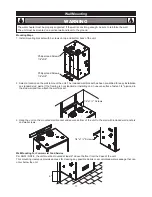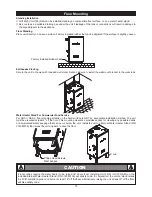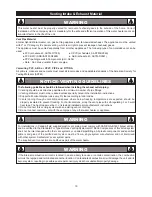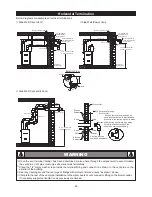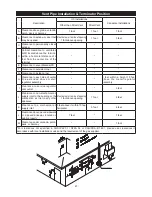
13
Condensate Disposal
The condensate drain must be filled and unobstructed to allow flow of condensate. The condensate should not
be subjected to conditions where freezing could occur. If the condensate is subjected to freezing or obstruction, it
can leak, resulting in potential water damage to the unit and surrounding area.
The drain line material must be an approved material by the authority having jurisdiction. In absence of such
authority, PVC and CPVC piping must comply with ASTM D1785 or D2845. This pipe must be connected to the
port at the side panel. The end of the pipe should drain to a laundry tub or to a floor drain.
Over time, blockage of the trap by debris may occur; when the condensate cannot be released, the unit will go into
error and will shut down. When this occurs, the trap must be cleaned.
CLEANING OUT THE TRAP
The condensate trap must be filled with water prior to using the water heater.
Fill 3.0 oz. of water through the exhaust collar per figure 1.
Eternal water heater will typically produce a condensate that is considered slightly acidic with a Ph content of
approximately 3-4. Install a neutralizing filter if required by authority having jurisdiction (See figure 2).
Direct to drain from the unit.
Drain through neutralizer from the unit.
Drain to laundry tub from the unit, in this case the unit must be above the height of the laundry tub.
When installing a condensate pump, ensure the pump is approved for use with condensing appliance.
The pump should be equipped with an overflow switch to prevent property damage from potential condensate
spillage.
1.
2.
3.
4.
CAUTION
Figure 2.
3/4" PVC pipe
Figure 3.
NOTICE
NOTICE
□
To Remove Trap
1. Gently pull trap body downwards to remove.
2. Remove clip securing trap to the nipple.
!
!
!
!
!
!
4
1
2
3
1
2
3 oz.
Figure 1.
4
1
2
3
1
2

















